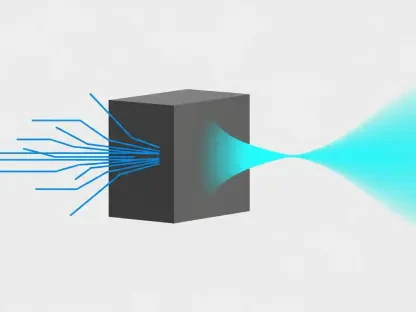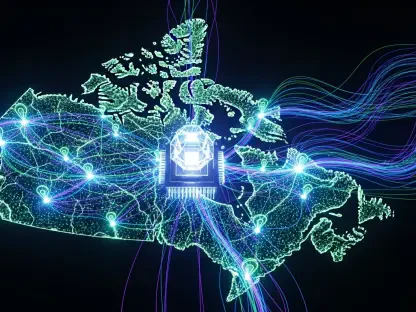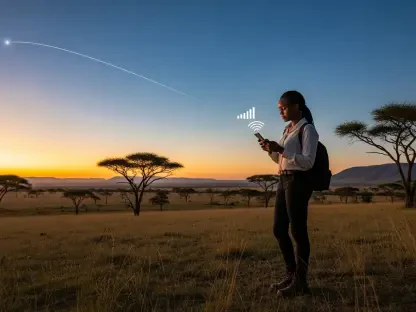In a world where digital demands surge by the minute, envision a network so advanced it not only keeps pace but predicts needs before they arise, transforming the way we connect and interact. Telia, a Nordic telecom powerhouse, is making this a reality through a transformative partnership with Nokia, harnessing the power of cloud-native 5G technology across five key markets. This collaboration promises to elevate connectivity to unprecedented levels, offering a glimpse into a future where speed, reliability, and innovation converge to reshape industries and daily life. What drives this seismic shift, and how does it impact businesses, communities, and critical operations?
The Significance of 5G Evolution
This partnership between Telia and Nokia is more than a technical upgrade; it’s a cornerstone for the next era of connectivity. With the deployment of Nokia’s cloud-native 5G Standalone (SA) Core across Finland, Sweden, Norway, Estonia, and Lithuania, Telia is addressing the escalating need for scalable and automated networks. As digital dependency deepens globally, this initiative stands as a critical response to the demand for low-latency, high-performance systems that support everything from enterprise solutions to public safety. The implications are vast, setting a new standard for telecommunications in the Nordic and Baltic regions.
The importance of this development lies in its potential to transform how societies function. By moving beyond legacy 4G systems, Telia’s adoption of a standalone core ensures flexibility to meet future challenges. Nokia’s expertise, evidenced by serving 127 global 5G SA core customers as of this year, adds a layer of credibility to the endeavor. This collaboration is a signal to industries worldwide that the shift to intelligent, adaptive networks is not just inevitable but already underway.
Unpacking the Power of Cloud-Native 5G
At the heart of Telia’s strategy is Nokia’s cloud-native 5G SA Core, a technology designed for agility and reliability. Deployed across five strategic markets, this system enables rapid service rollouts tailored to diverse customer needs, from individual users to large enterprises. Unlike older network architectures, the standalone core operates independently, allowing for seamless automation and scalability that can adapt to sudden spikes in demand or evolving use cases.
Beyond the core, the partnership extends to enhancing infrastructure in specific regions. In Finland, Nokia’s Radio Access Network (RAN) portfolio is expanding 5G coverage while prioritizing energy efficiency, aligning with sustainability goals. This deployment ensures faster speeds and broader reach, delivering a superior user experience to Finnish customers. It’s a clear demonstration of balancing technological progress with environmental responsibility, a priority echoed by both companies.
One standout achievement is the innovative application of this technology for societal benefit. The upgraded infrastructure opens doors to cutting-edge solutions for sectors like healthcare and defense, where reliable connectivity can be a game-changer. This focus on real-world impact underscores the broader vision of creating networks that don’t just connect devices but empower communities and industries to thrive in a digital age.
Leadership Perspectives on Connectivity’s Future
Key voices from both organizations shed light on the transformative potential of this alliance. Alexandra Fürst, Telia’s Chief Technology and Information Officer, points to the role of intelligence in modern networks, noting, “AI-driven insights and automation are pivotal in crafting the connectivity of tomorrow.” This statement reflects a forward-thinking approach, emphasizing how technology can anticipate and address user needs proactively.
Echoing this optimism, Kal De, Senior Vice President at Nokia, highlights the strengths of their cloud-native core, stating, “Its agility and security form the bedrock for groundbreaking service innovation.” These insights reveal a shared belief in 5G SA as a catalyst for change. A vivid example of this vision in action is the recent cross-border trial with the Finnish Defense Forces, where a seamless 5G SA network slice handover across multiple countries proved its worth for mission-critical scenarios.
The alignment of perspectives between Telia and Nokia illustrates a unified commitment to pushing boundaries. Their combined focus on automation, security, and practical applications—demonstrated through real-world successes like the Nordic military exercise—paints a compelling picture of how 5G can solve complex challenges. It’s a testament to the power of collaboration in driving technological leaps that benefit diverse sectors.
Real-World Impact: A Defense Milestone
A remarkable highlight of this partnership is a groundbreaking trial that showcased 5G’s potential in high-stakes environments. In a joint effort with the Finnish Defense Forces, Telia and Nokia achieved the world’s first seamless 5G SA network slice handover across national borders during a Nordic military exercise. This feat ensured uninterrupted, secure connectivity as users moved between separate networks in different countries, a critical capability for international defense operations.
This achievement goes beyond technical prowess; it signals a shift in how commercial 5G networks can support specialized, mission-critical use cases. The ability to maintain high-performance communication in such scenarios is invaluable, particularly for sectors where reliability can mean the difference between success and failure. It positions Telia and Nokia as pioneers in adapting cutting-edge technology to meet the stringent demands of public safety and defense.
The broader implication of this trial is the versatility it reveals in 5G infrastructure. By proving that networks can handle complex, cross-border operations without faltering, the partnership sets a precedent for future applications in emergency response, disaster management, and other critical areas. This milestone is a clear indicator of how far-reaching the impact of advanced connectivity can be when tailored to specific, high-priority needs.
Harnessing 5G for Organizational and Community Growth
For businesses, public entities, and tech advocates looking to capitalize on 5G advancements, this collaboration offers a blueprint for action. Start by evaluating specific areas where enhanced connectivity could revolutionize operations, such as enabling remote workflows, powering smart city initiatives, or strengthening emergency systems. Identifying these opportunities is the first step toward leveraging the kind of infrastructure Telia and Nokia are building.
Collaboration with forward-thinking providers like Telia can unlock tailored 5G solutions for unique challenges, whether in enterprise settings or public services. Additionally, prioritizing energy-efficient technologies, as demonstrated in Finland’s RAN expansion, ensures that performance gains don’t come at the expense of sustainability. Staying attuned to trends like AI-driven networks and automation is equally vital, allowing organizations to anticipate and adapt to emerging service possibilities in a competitive landscape.
Reflecting on this partnership’s strides, the past saw Telia and Nokia lay a robust foundation for 5G innovation across the Nordic and Baltic regions. Their focus on scalability, security, and societal impact addressed immediate connectivity needs while setting the stage for long-term transformation. Looking ahead, stakeholders are encouraged to explore partnerships and pilot projects that test 5G’s potential in their contexts. By investing in education around these technologies and advocating for policies that support network expansion, communities and industries can ensure they’re not just keeping up but leading the charge in a connected future.









